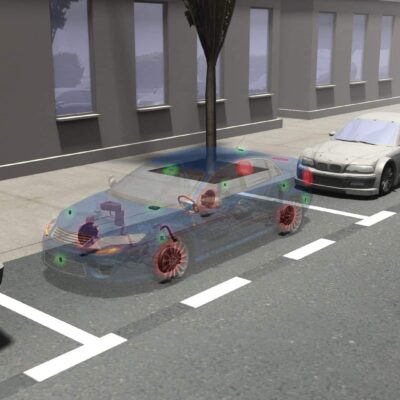As markets make the future-forward concepts conceived over the last century part of our current reality, automotive innovation is moving beyond the basics. Today, almost all major automakers around the globe have begun shifting their operations to focus on one thing: electric vehicles (EVs). A corner of the market that was once singularly dominated by Tesla, EVs have evolved from a ‘nice-to-have’ into an essential for every automotive manufacturer who wants to maintain relevancy as we head towards an electrified future. This means electric vehicle innovations have started making waves in the industry.
We have already seen numerous legal disputes among major market players over everything from intellectual property infringements to shareholder conflicts. And though there are still strides to be made in industry standardization concerning software, hardware, and vehicle design, there are some innovators in the industry that are stepping away from the pack and paving their way in the EV space. As the market progresses, these three concepts are ones to watch when it comes to litigation potential – especially when it comes to protecting their IP.
Aptera and the First Solar EV
As EVs become more prevalent in the United States, it has become increasingly clear that we currently lack the resources to support a quick electric switch. Battery materials are scarce, infrastructure is lagging, and many manufacturers are adopting a larger, heavier vehicle design that requires greater amounts of energy to power and manufacture. That’s why Aptera decided to focus on efficiency and create aerodynamic, lightweight vehicles that are powered by the sun.
This isn’t Aptera’s first headlining move in the EV world; they first founded their company in 2006 to create an EV that could achieve 300 mpg. And while they were not able to accomplish the lofty goal, they came back to the EV market in 2019 to create the first solar electric vehicle (sEV) that can handle most daily driving needs off the grid.
Their technology allows consumers to drive about 40 miles per day that are solely powered by the sun, offering 700 watts of continuous charging power and a 1,000-mile-per-charge range (which is the highest in the market). To reduce the energy needed to propel the car forward, Aptera focused heavily on aerodynamics when designing their vehicles, which weigh 65% less than other EVs. Their drag coefficients are rivaled only by solar racers, beating out Tesla’s Model 3.
WIT automotive expert Laine Mears quipped that sEVs conjured imagines of a dreamy future where birds would be singing. He considered this type of “all-in” innovation not unrealistic and sees a real future in the U.S. with its potential to usher in a big change. Mears says, “Your car gets charged off a solar panel that lightens the load on the electrical infrastructure and pushes some of those infrastructure investments down to each person in each house rather than building more and more large power plants, which may not be sustainable.”
Each Aptera owner can reduce their carbon footprint by over 14,000 pounds of CO2 per year and with more than 10k consumers reserving the vehicle across 84 countries, this technology is sure to make waves in the green transportation industry when they officially launch. And as a major trailblazer in the sEV space, the potential for legal disputes regarding their technology is high. Make sure you keep an eye out for these futuristic feats on the road towards the end of this year.
SparkCharge and Mobile EV Charging
As we know, charging infrastructure in the U.S. is currently lacking the leverage needed to mitigate consumers’ range anxiety. One of the biggest roadblocks to widespread EV adoption surrounds the driver’s stress over miles per charge range, duration of charging, and availability of charging stations on their route. It’s been reported that even though 55% of homeowners have the infrastructure to support EV charging, close to 100 million other consumers’ homes cannot support the need. And while the government and manufacturers alike are working to calm these concerns, SparkCharge decided to take matters into their own hands to create the first EV charging system and network, helping to form an entirely new portion of the market: Charging-as-a-Service (CaaS).
With their Currently app, subscribers can have their EVs charged whenever, wherever. Their current service areas cover LA, San Francisco, San Jose, and Dallas, and all it takes to get a technician out to charge your vehicle is their app, a subscription tailored to your usage, and a touch of a button. When you request a charge through Currently, a delivery technician will take care of all aspects of the charging on their own, notifying you via text when the job is complete. Each Sparkcharge appointment provides up to 100 miles per charge, only charging your battery up to 80%. But this isn’t the only way they’re offering power.
SparkCharge also offers a product line called The Roadie; the Roadie is built for businesses and provides an alternative to charging stations for auto manufacturers, car dealerships, retail stores, rental companies, and more. They give the ability to customize the configuration of the chargers (A 2 stack with a 35-mile range, 3 stack with a 55-mile range, or a 4 stack with a 72-mile range) and you can choose between CCS or CHAdeMO formats. They’re portable, compatible with virtually all EVs, and offer great charging options for fleets, roadside assistance providers, and OEMs. But unfortunately, like all other great technology, they are likely going to be impacted by an influx of intellectual property infringement. When EVs become more of a market norm, many manufacturers are going to be fighting for their spot in the portable charging market, making disputes in this space inevitable.
Electreon and Wireless Charging Infrastructure
It should be evident by now that charging is one of the most prevalent problems trying to be solved by manufacturers in the EV space. The above two technologies offer wonderful solutions for green vehicles, but why not take this a step further and begin creating entire green cities with the infrastructure to support these innovations? Electreon aimed to do just that when they created their company in 2013 with one goal in mind: to help design a decarbonized world.
Electreon has created a shared, invisible wireless charging system that can be installed right in our roadways to offer effortless charging capabilities for every EV. They boast three ways to charge: dynamically, through wireless electric roads; semi-dynamically, for slow-moving vehicles like cabs or those sitting at traffic lights; and stationary charging, for static vehicles at bus stations or parking lots. Each of these options allows e-fleets to charge conveniently throughout the day, reducing the need for heavy batteries and high amounts of power.
According to their website, the system architecture is designed for large-scale use, allowing dozens of vehicles to charge from the same system without stressing the electric grid. Up to 1 mile of Electric Road can be laid a night, and there are no visual impacts. This technology helps mitigate range anxiety and minimizes the need for larger batteries, making the vehicles cheaper, lighter, and more sustainable.
While this innovation is not yet widely available, they are seeing successful pilot launches in cities like Tel Aviv and Italy. As Electreon begins to refine its offerings, other technology providers will undoubtedly start taking plays from their book. And as we know, that’s when the potential for legal conflicts will begin to arise.
Be sure to keep an eye out for these electric vehicle innovations and more as the industry moves towards its 2030 goal.
If your company needs help preparing for challenges surrounding new innovations like these, reach out to WIT for the best experts who can advise you on your strategy. Our electric vehicles expert team was created to address what we expect to be the key areas of litigation in the move to electric fleets, and their knowledge covers all aspects of manufacturing.








